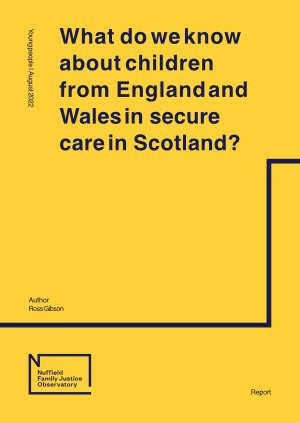By Traverse
Overrepresentation of ethnic minority children in the youth justice system remains an enduring and unacceptable feature. The Youth Justice Board (YJB) commissioned Traverse to conduct research into the drivers of ethnic disparity in reoffending rates. The aims of this research are to offer a fuller understanding of the criminogenic (crime causing) contextual factors that may drive ethnic disparity in reoffending rates and understand the seldom heard perceptions of children with experience of the youth justice system regarding the support and interventions they have experienced. This report focuses on the qualitative strand of the research, which consists of 19 interviews with children with proven reoffences known to services and three focus groups with 22 practitioners from Greater London, East and West Midlands and North West England. Children and practitioners were asked to share their experiences of interventions to prevent reoffending, factors that contribute to reoffending and the support required for children from different ethnic minority groups to prevent reoffending. There is also an Analysis of reoffending data report which should be considered alongside this report. The findings from this research illustrate four key thematic drivers of ethnic disparity in offending rates for children. Marginalisation of individuals and communities Nearly all children interviewed had been excluded from school prior to, or as a direct result of their first offence. Exclusion removes consistency from children’s lives and makes it harder for practitioners to engage with them in a safe space. Children want educational courses to be a part of their reparations, to help them gain skills and achieve their aspirations. Poverty and social class were key issues highlighted by both practitioners and children that influence offending and reoffending rates. These background factors contribute to a system in which ethnic minority children were overpoliced but under protected. Individual, institutional, and systemic bias Children involved in crime are more commonly treated as adults – especially those from ethnic minority backgrounds – which can lead to a lack of safeguarding. Implicit and explicit racism within different institutions means ethnic minority children are treated differently to their White peers which contributes to feeling like they have already been written off. A lack of diversity among the police and courts system was felt by many interviewed to underline systemic racial bias. This perceived bias was reflected in the number of times children had been stopped and searched, much higher than their White friends. Furthermore, examples were given of explicit racial disparity in sentencing, where ethnic minority children received longer or harsher sentences than their White peers for the same offence. Weaknesses in prevention and intervention Building strong, trusting relationships with children was viewed as a prerequisite to delivering effective interventions. Where this did happen, children spoke positively about their interactions with caseworkers. However, this was not always possible due to a lack of time and resources. Additionally, a shortage of wraparound services such as Child and Adolescent Mental Health Services and employability support was identified as a potential driver for reoffending. Negative experiences of the wider youth justice system The lack of information for children navigating the youth justice system is reported to be a driver of ethnic disparity in reoffending rates. This is exacerbated by negative experiences of police custody and inadequate legal representation as reported by many children. This, plus the failure of sentencing to account for children’s needs and experiences means interventions to reduce reoffending are not as effective as they could be. Recommendations ◼ exclude children from education only as a last resort ◼ prioritise funding for local services aimed at children ◼ offer online tutoring for excluded children ◼ provide weekly allowances for children at risk of reoffending ◼ standardise intelligence collection ◼ increase diversity within the system ◼ amplify the voices of youth justice practitioners ◼ support practitioners to tackle issues of race ◼ provide training and support for staff working with children from Gypsy, Roma and Traveller communities ◼ increase funding for youth justice services ◼ extension of statutory intervention timelines ◼ formalise handover processes ◼ empower practitioners to tailor interventions to children’s individual needs, interests, and aspirations ◼ limit out of area moves wherever possible ◼ enable practitioners to share practice across services and localities ◼ embed youth justice practitioners in police custody suites.
London: Youth Justice Board, 2023. 46p.






